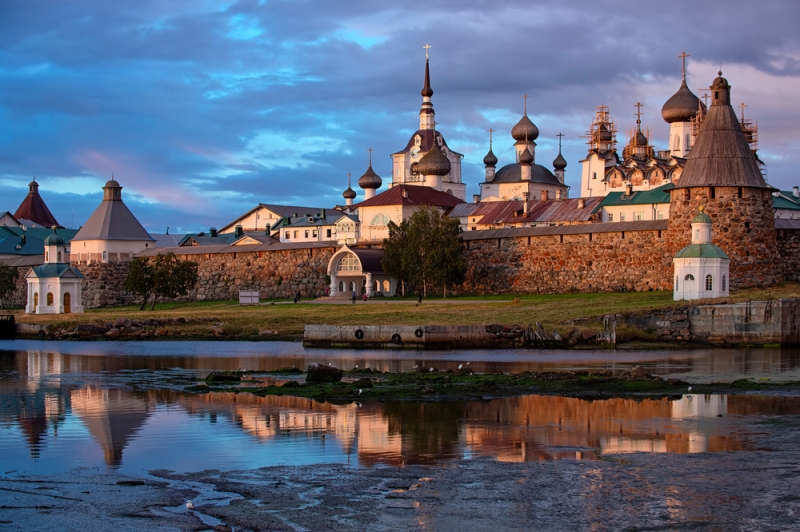
Arkhangelsk region is the world of northern Russian villages: a huge, majestic and living open-air museum. Slender wooden churches and powerful huts are scattered along the banks of winding rivers. They house haylofts and barns under the same roof as living rooms. And the narrow windows remind you that this is the north, and the warmth needs to be carefully preserved. A different era still reigns here, infinitely far from not only asphalt roads, but even from white-stone cathedrals. Here you plunge into the world of Pomors and their traditions.
And all around was the kingdom of the laconic and romantic nature of the Russian north. White nights in summer, deep snow in winter, thickets of mushrooms among the taiga and cloudberry fields in the tundra, the White Sea, karst caves and glaciers of the Russian Arctic Park.
When to go
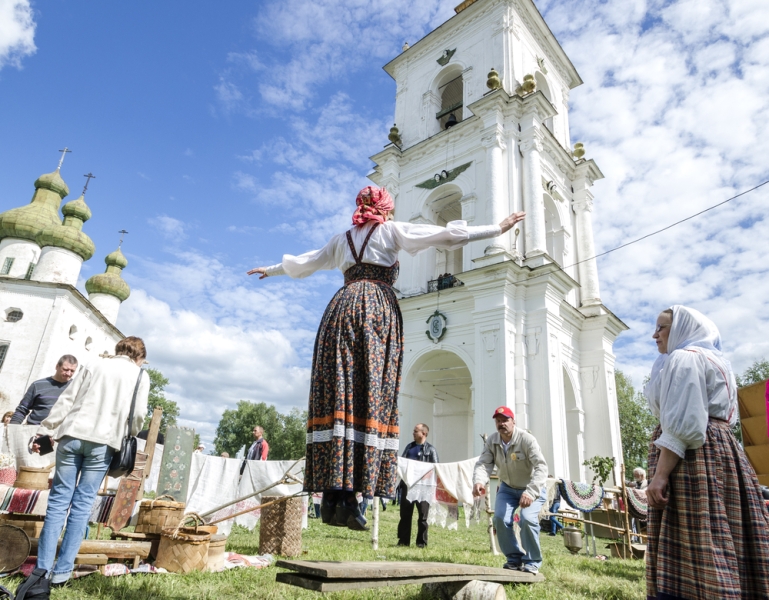
Photo: Yakovlev Sergey/Shutterstock.com
Even though summer seems to be the best season to visit this region, in winter the Arkhangelsk region can be an equally interesting destination. Firstly, winter roads (“winter roads”) appear where in the summer there is either no travel at all, or it is necessary to use ferries. Secondly, there is the opportunity to see the northern lights. And thirdly, there are no insects here in winter.
How to get there and what to travel with
The fastest and most convenient way to get to Arkhangelsk is by plane. The journey from Moscow will take 2 hours, the average cost of a round trip flight is from 4,000 to 10 000 rubles.
Trains Moscow – Arkhangelsk depart daily, travel time is about 20 hours, the cost of travel in a one-way compartment is from 3 000 rubles.
You can travel around the region as part of organized groups (by booking an excursion at one of the travel agencies in Arkhangelsk) or independently by rail and on regional buses.
The roads, unfortunately, are far from being in the best condition. So, in order to actively travel around the region with a rented car, you should choose all-wheel drive vehicle and regularly check the website for updates on road and crossing conditions.
Where to stay

Photo: Shutterstock.com
In the capital, the choice of accommodation facilities is quite wide. Their cost varies from 1,500 rubles for an apartment with two bedrooms to 4 000 – 6 000 rubles per room in the four-star hotels “Pur-Navolok” and Novotel.
Outside Arkhangelsk, the choice is extremely scarce; hotels can be found only in relatively large cities like Onega, Pinega and Kargopol. Guest houses are gradually appearing in the villages most frequently visited by tourists.
What to see
Solovetsky Monastery
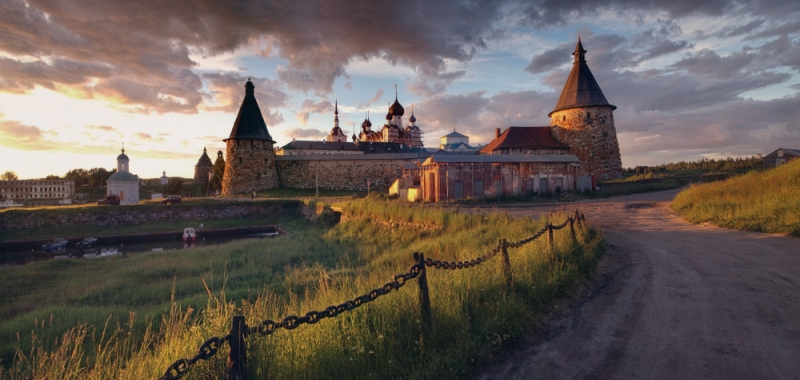
Photo : Shutterstock.com
The region’s most famous landmark is depicted on the five hundred dollar bill. The buildings of the monastery (the monastery itself, hermitages and deserts) are located on the four main islands of the Solovetsky archipelago; both walking and water excursions are held throughout the complex, and boats, boats and bicycles are offered for rent. Pilgrims, nature lovers and people interested in the history of the region will certainly enjoy it here.
There is only one hotel on the islands (from 3,500 rubles per night), rooms are also available for rent in the private sector.
It is better to come from June to September, during the navigation period. Regular ships and boats leave from the ports of Kem and Belomorsk (Republic of Karelia) and cost about 3,500 rubles for a round trip ticket (travel time 2-4 hours depending on weather conditions). You can also fly to Solovki from Arkhangelsk (50 minutes, about 7,000 rubles), In winter, the plane remains the only way to get to the archipelago (excursions on land in this case take place on foot or by snowmobile).
Tip: since most of the objects of the archipelago are of a religious nature, you need to take care of the appropriate appearance (not too revealing clothes, for women – a headscarf).
Interesting: from June 15 to August 15 at Cape Beluzhiy you can see white whales (beluga whales).
Contact information: solovki.info
Kenozersky National Park
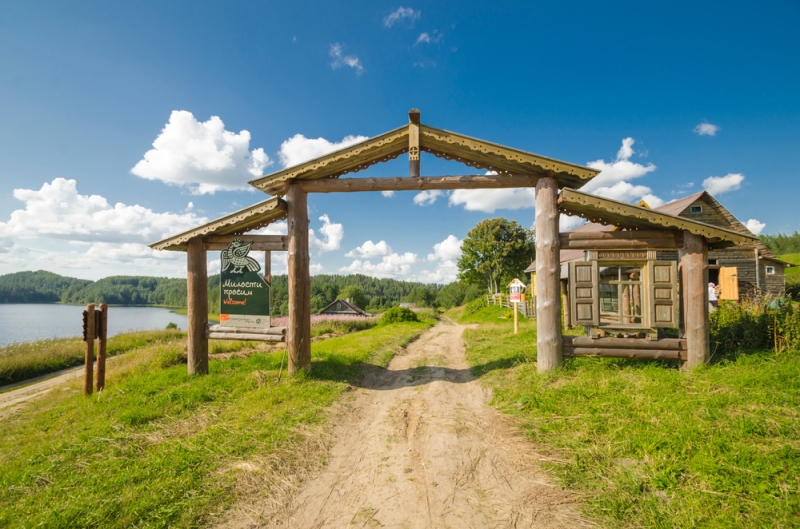
Photo: Yakovlev Sergey/Shutterstock.com
The natural-historical park is divided into two sectors: Kargopol (southern, interesting primarily by the nature and location of the watershed of the Arctic and Atlantic oceans) and Plesetsk (northern, its “feature” is churches and chapels, worship crosses and historical villages). Both are worth visiting and offer a wide range of excursions.
The most popular water-pedestrian route “System of Five Lakes”, passing in the Kargopol sector (800 rubles), and a water excursion on the motor ship “Zarya” in the Plesetsk sector (3,600 rubles). In addition, you can take part in ethnographic programs introducing the traditions of local residents, and in master classes on crafts and cooking local dishes.
There are guest houses on the territory of the national park, but we recommend booking rooms (as well as excursions) in advance; in the summer this is a very popular holiday destination.
The easiest way to get there is by car. An alternative is by train and then by bus from Nyandoma (for the Kargopol sector) and Plesetsk (for the Plesetsk sector).
The winter season in the park is from December to April, this is the time for lovers of skiing, ice fishing and snowmobiling.
Contact information: kenozero.ru
Kargopol
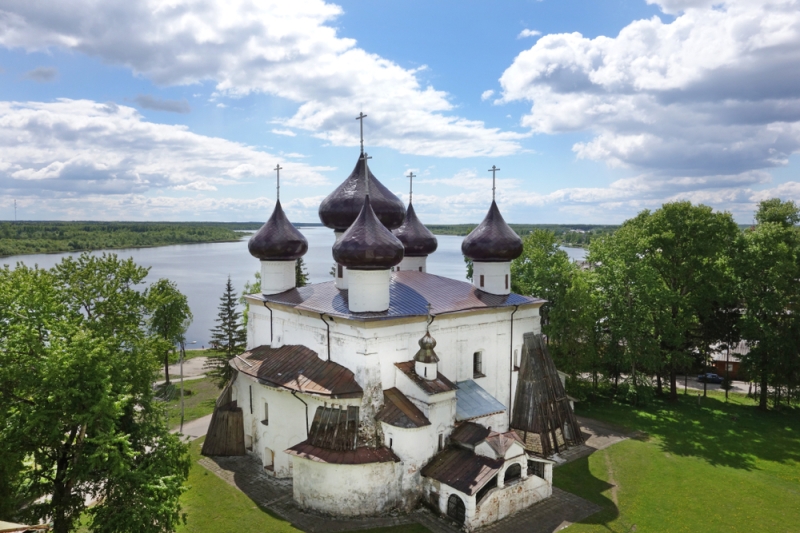
Photo: Shutterstock.com
Cozy and compact, once one of the oldest trading cities of the Russian north, Kargopol looks very well-kept. The city is literally crammed with temples, churches and cathedrals; there is a bell tower and ancient merchant mansions. Clay toys are made in Veshnyakov’s house, an exhibition of blacksmith’s products is located in the Trinity Church, and a collection of painted “heaven” is in the Nativity of Christ Cathedral. In January, the annual festival of bell art “Crystal Ringings” takes place in Kargopol.
You shouldn’t look for luxury hotels here, but the range of prices is impressive (a room can cost 500 or 7,000 rubles).
You can get there from Nyandoma station (on the route Moscow – Arkhangelsk) and then by regular bus (ticket costs 160 rubles, travel time 2 hours).
Beautiful villages of Russia: Verkola, Kimzha, Kiltsa and Oshevensky Pogost
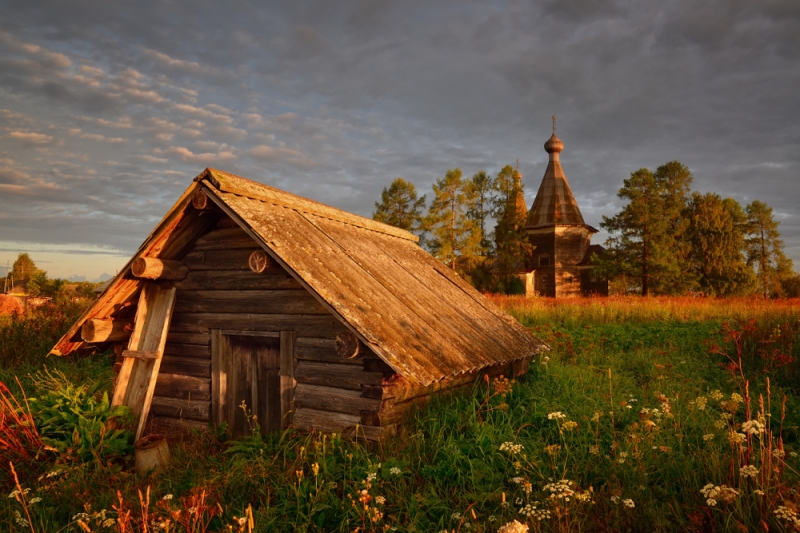
Photo: Shutterstock.com
Arkhangelsk region occupies one of the leading places in the lists of the association “The most beautiful villages and towns of Russia”.
Currently, it is represented by four villages: these are quite inaccessible and remote from the major highways of Kiltsa and Kimzha (on the Mezen River) and Verkola (on the Pinega River), as well as Oshevensky Pogost (45 km from Kargopol). In the near future, the list will be supplemented by Kargopol and Solvychegodsk itself, as well as the village of Zekhnova in the Kenozersky National Park and the 500-year-old village of Cherevkovo (110 km from Kotlas).
Contact information: krasaderevni.ru
Arkhangelsk
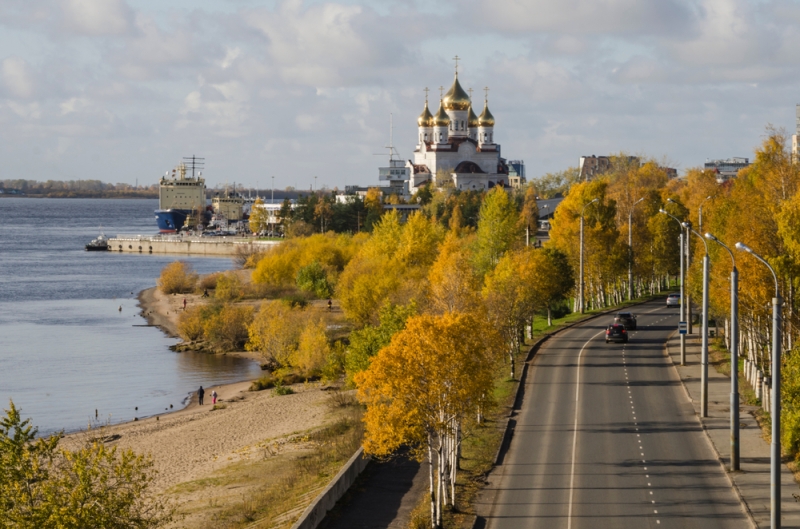
Photo: Shutterstock.com
The capital of the region is located in the Northern Dvina delta. Many ancient buildings have been preserved here (mainly on the pedestrian Chumbarova-Luchinsky Avenue), the embankment has been perfectly restored and put in order (you can visit the Gostiny Dvor and the Northern Maritime Museum), and when you go down to the beach, you will see a 500-meter wall with graffiti depicting the entire 400-year history of the city.
Another notable object is located in the suburbs, 25 km from the city. This is the Malye Karely Museum of Wooden Architecture – an excellent opportunity to get acquainted with the world of northern villages for those who do not have time or cannot get to one of the remote villages. Here are collected examples of ancient buildings (mills, bell towers, huts, chapels), household items and examples of Pomeranian culture. “Little Karelians” will give an excellent idea of what life was like for our ancestors in the northern latitudes and what it remains to this day in many parts of the Arkhangelsk region.
Travel by bus from the railway and bus stations, a ticket costs 80 rubles, the ride takes about half an hour. Entrance to the museum is 250 rubles.
Contact information: korely.ru
Russian Arctic Park
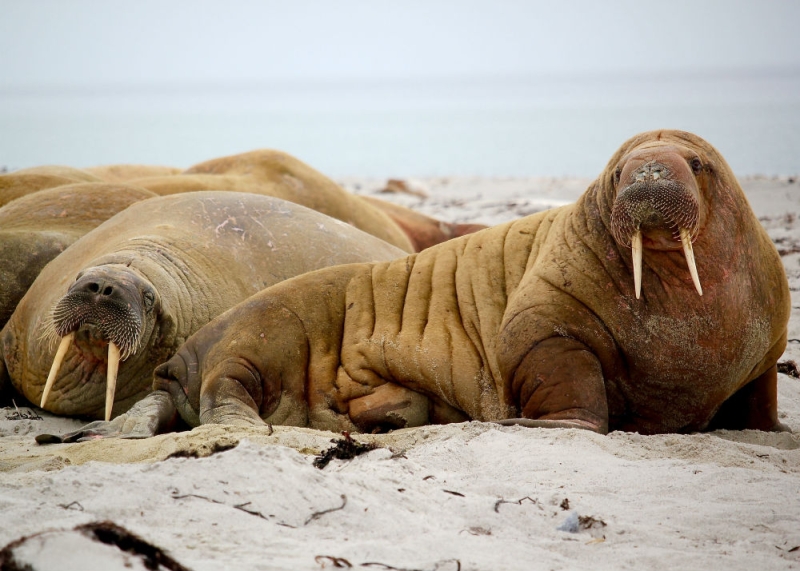
Photo: Unsplash.com
A separate point worth mentioning is the Arctic archipelagos of Franz Josef Land and Novaya Zemlya – unique territories where you can see polar bears, seals, bowhead whales and seals, walruses and huge bird colonies. Alas, due to the high cost of cruises (from 500,000 rubles), this destination is not available to everyone who wants to get acquainted with the wonderful world of the Russian Arctic.
Text author: Ksenia Chesnokova

